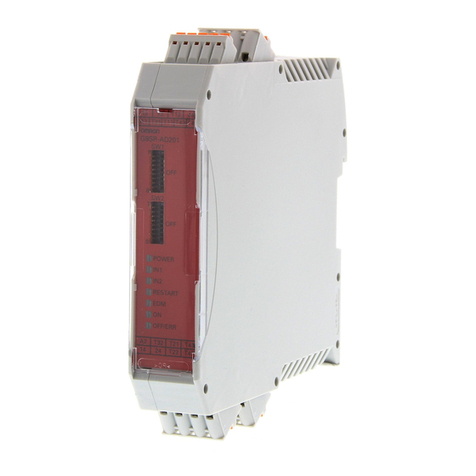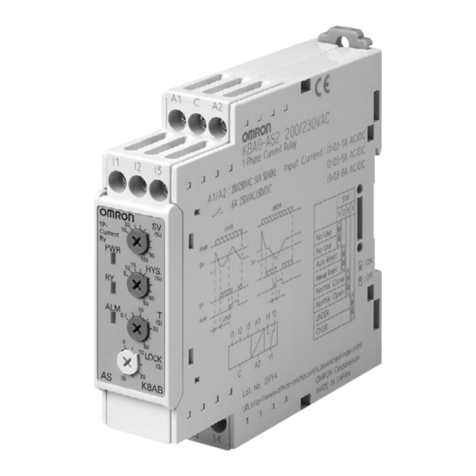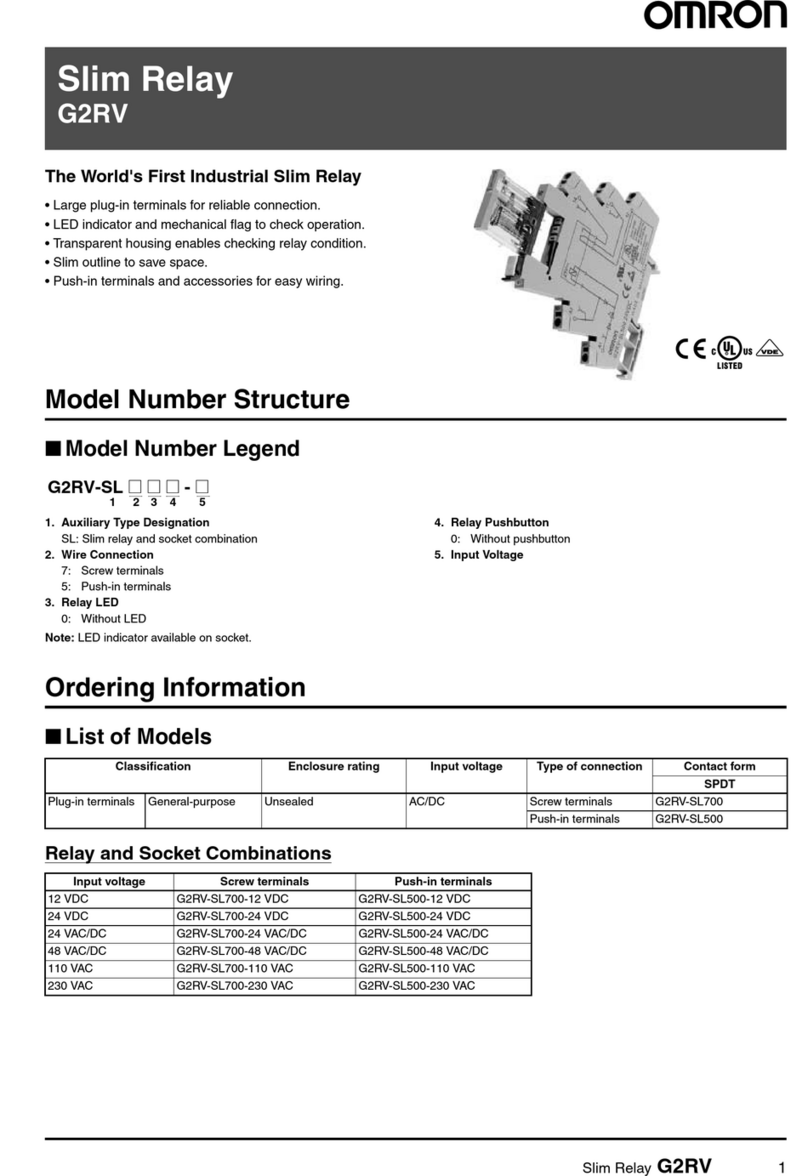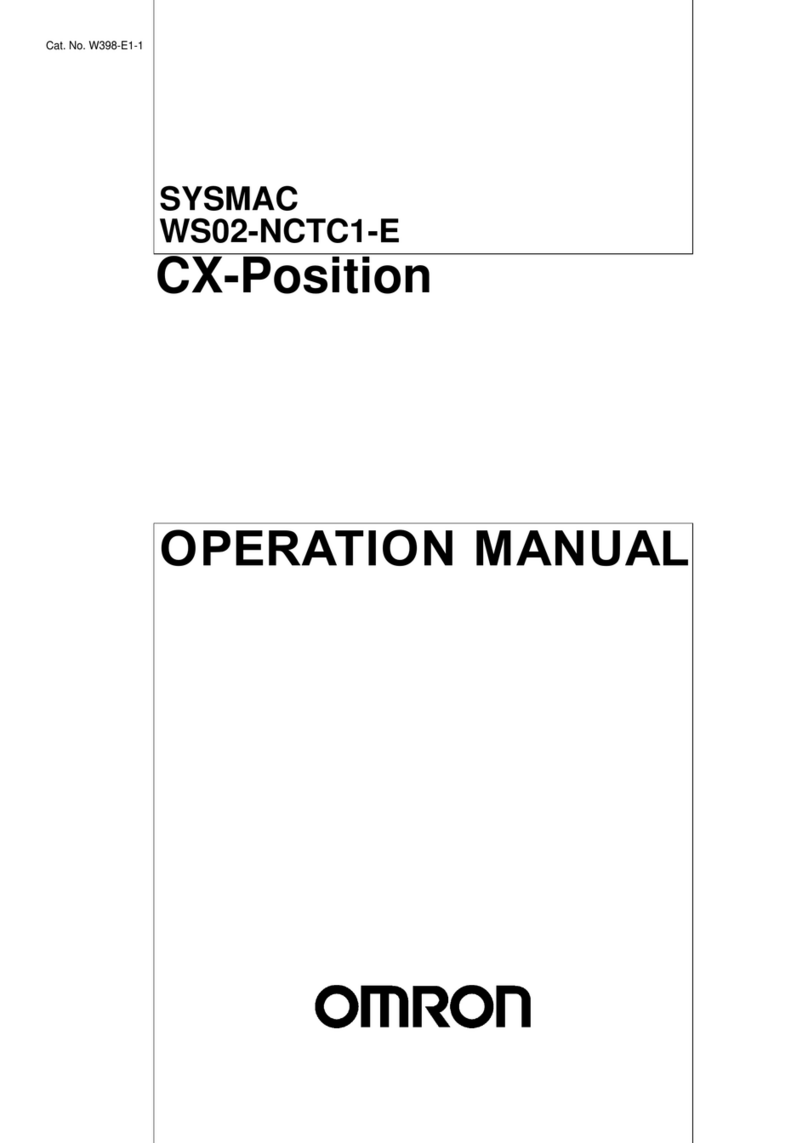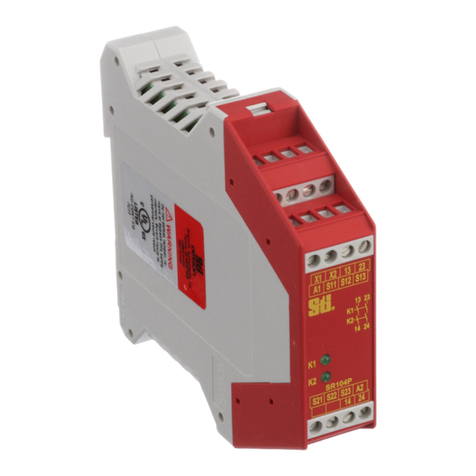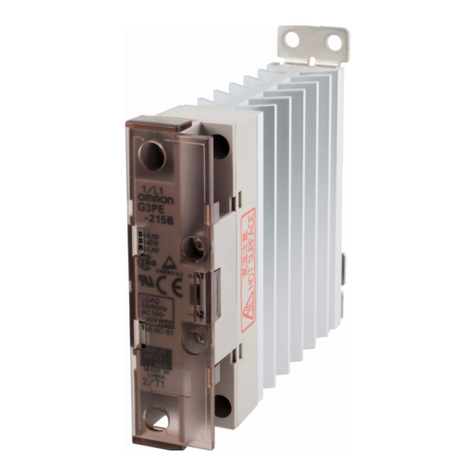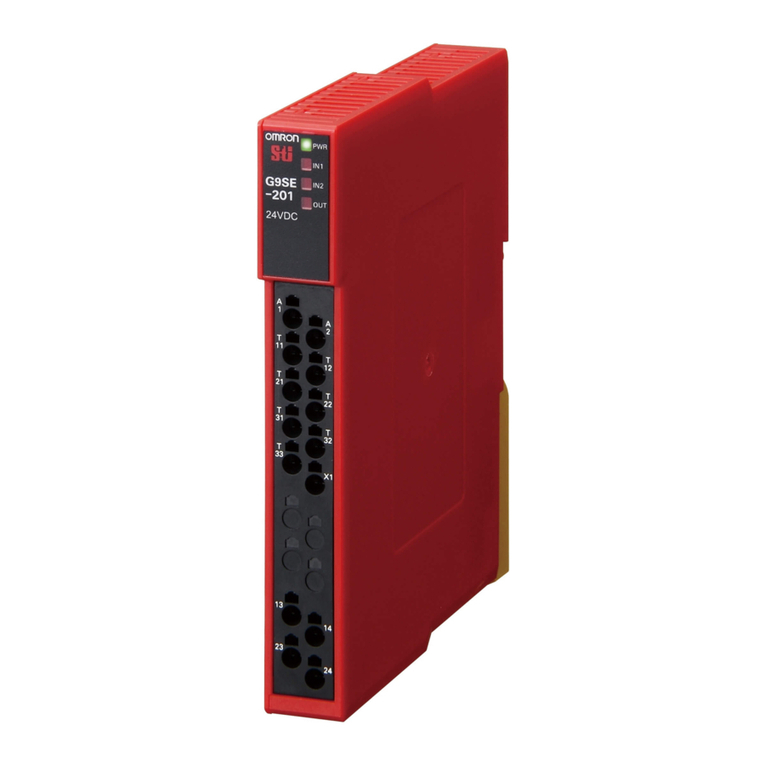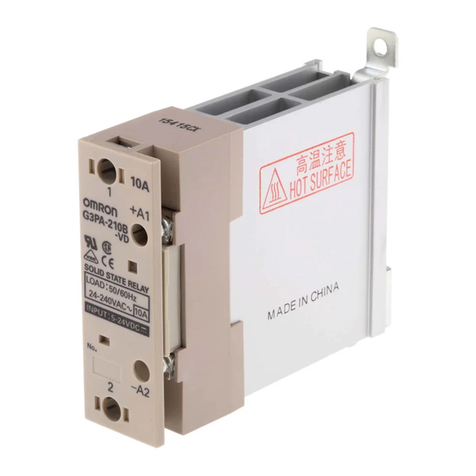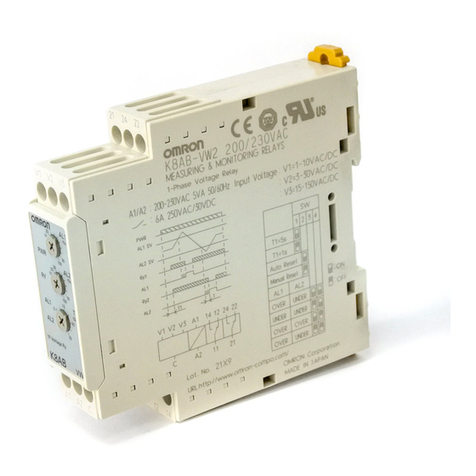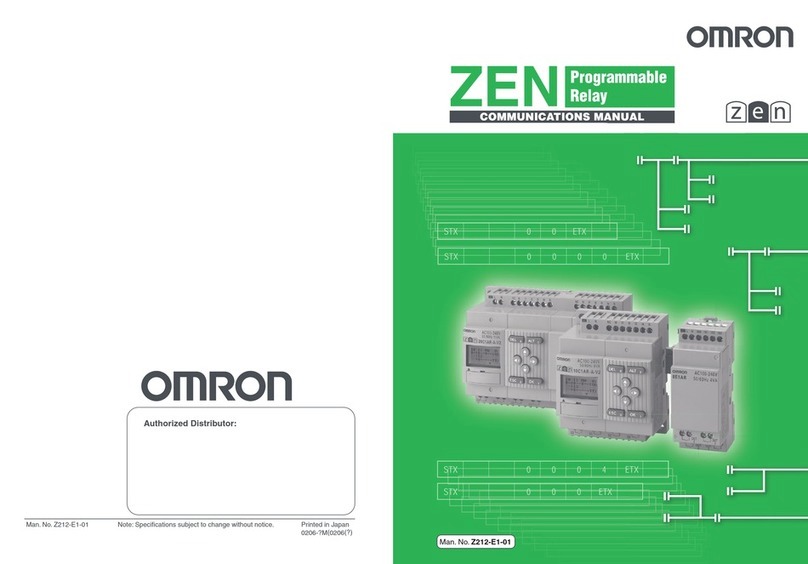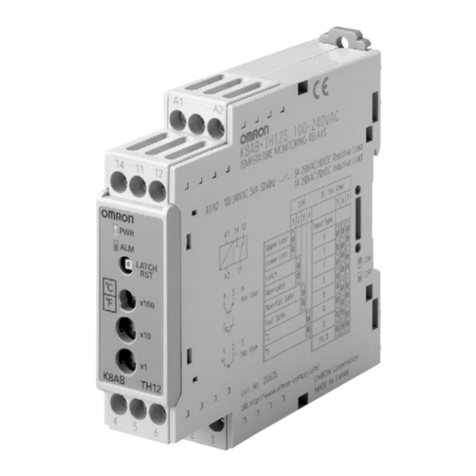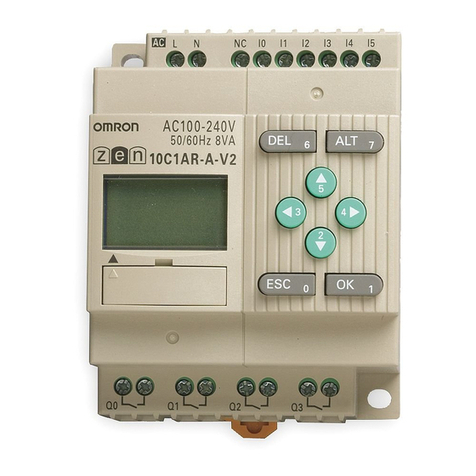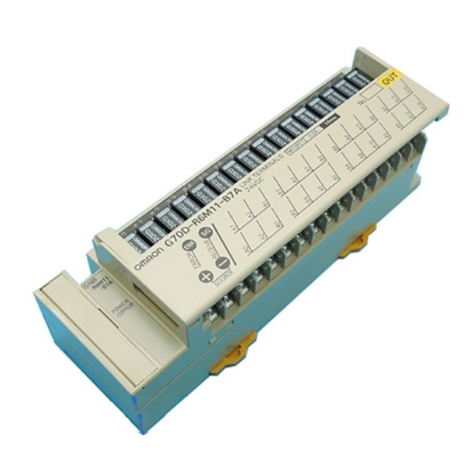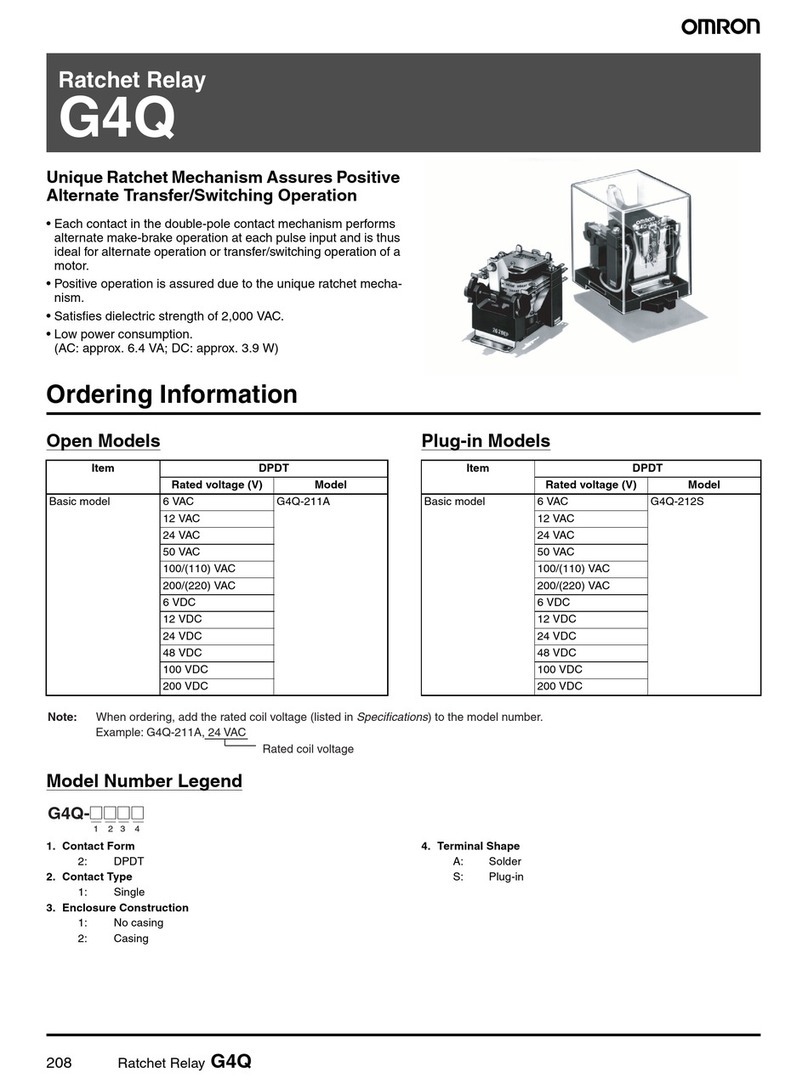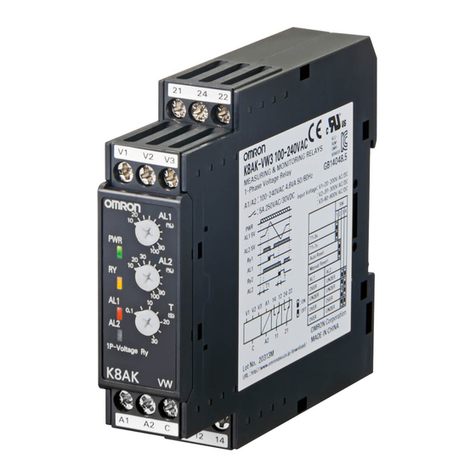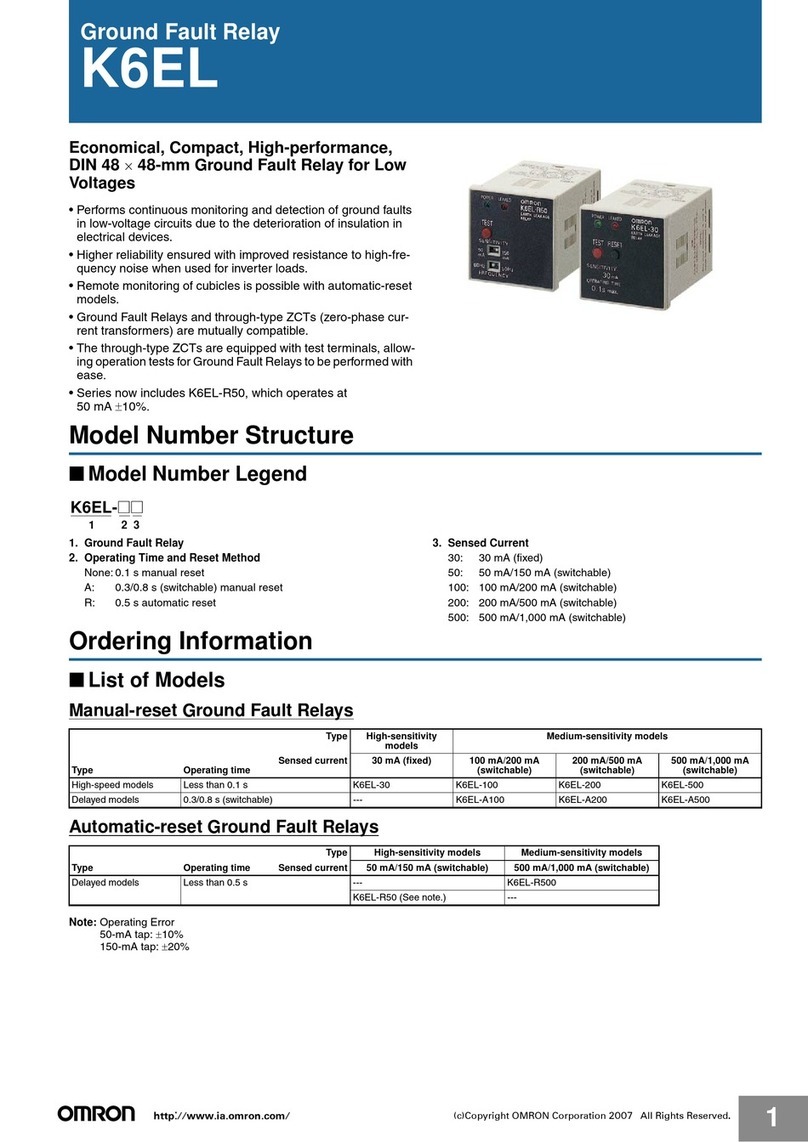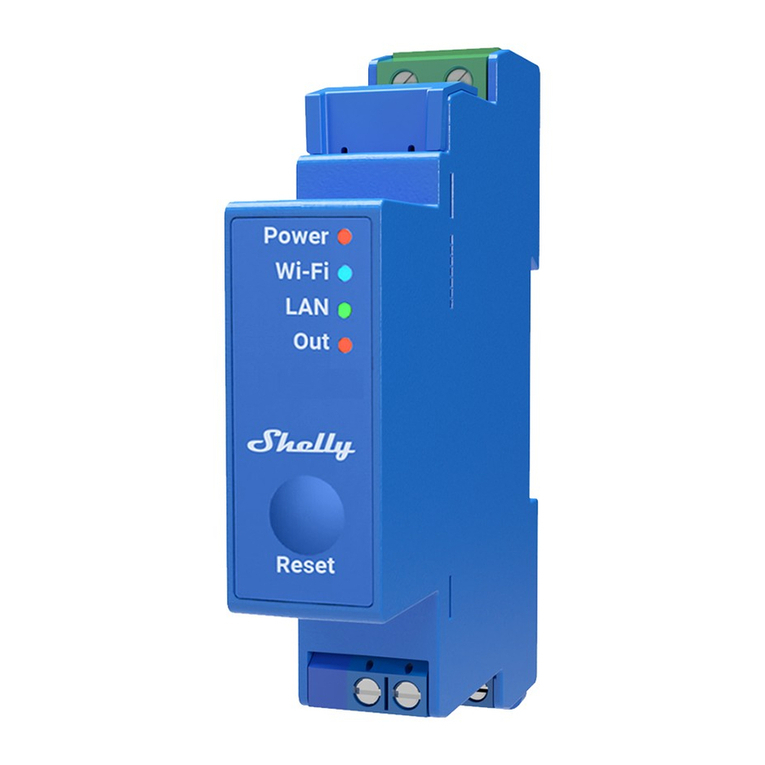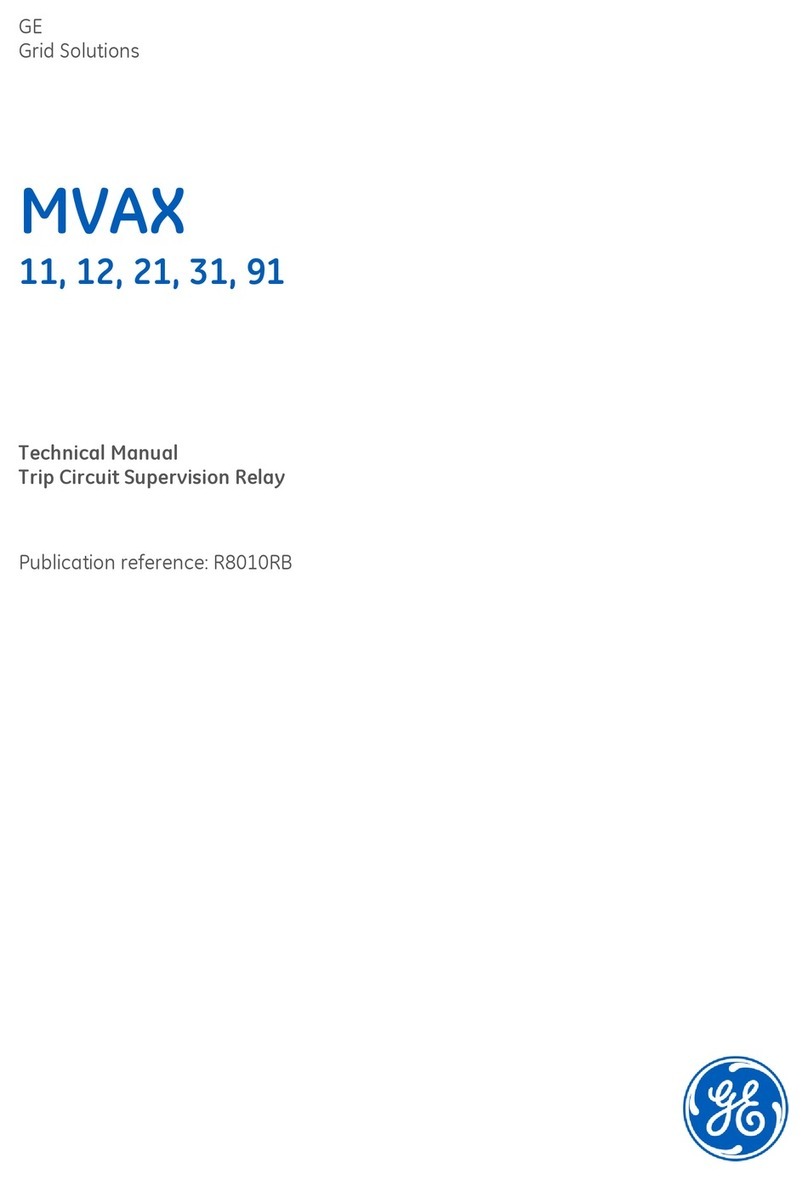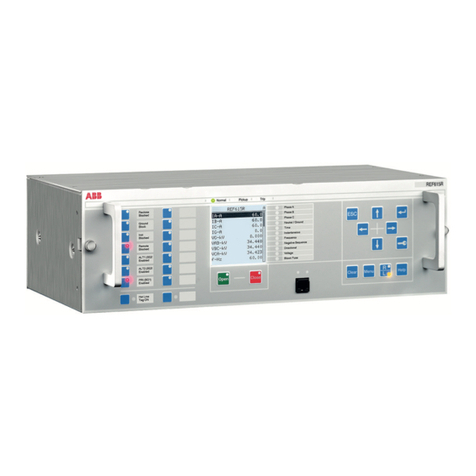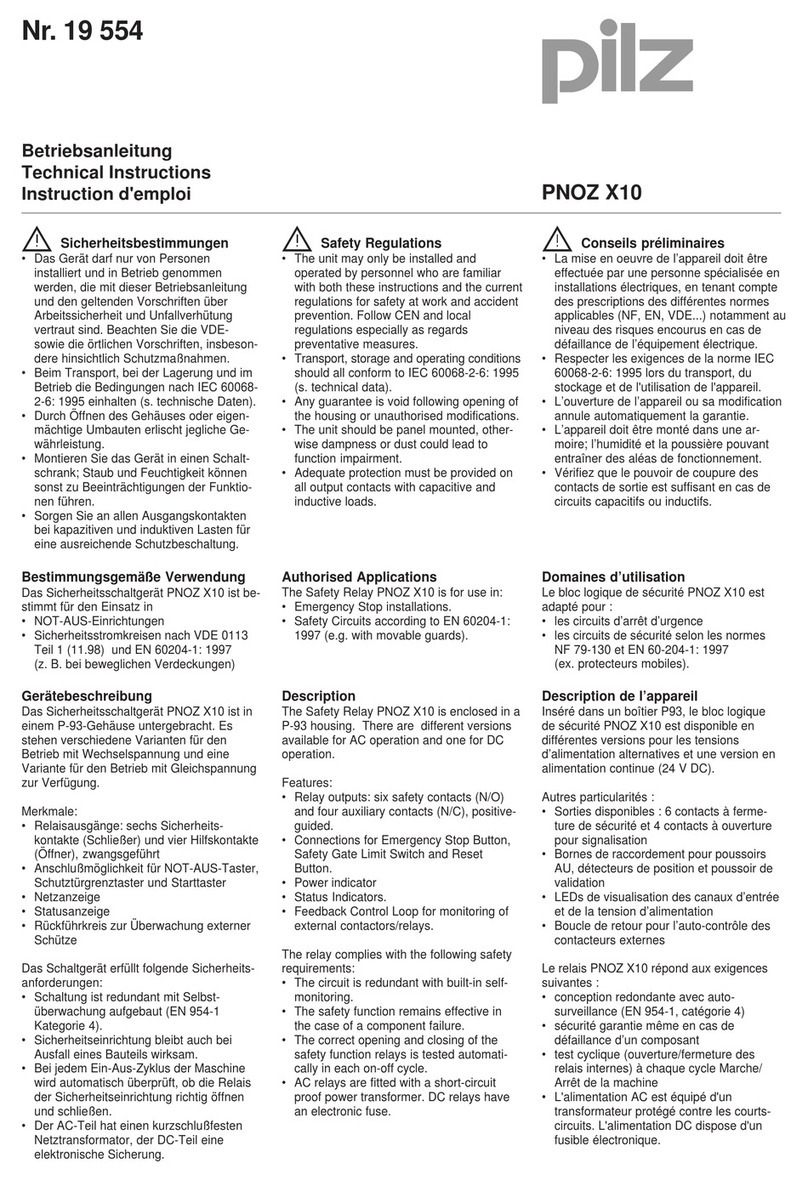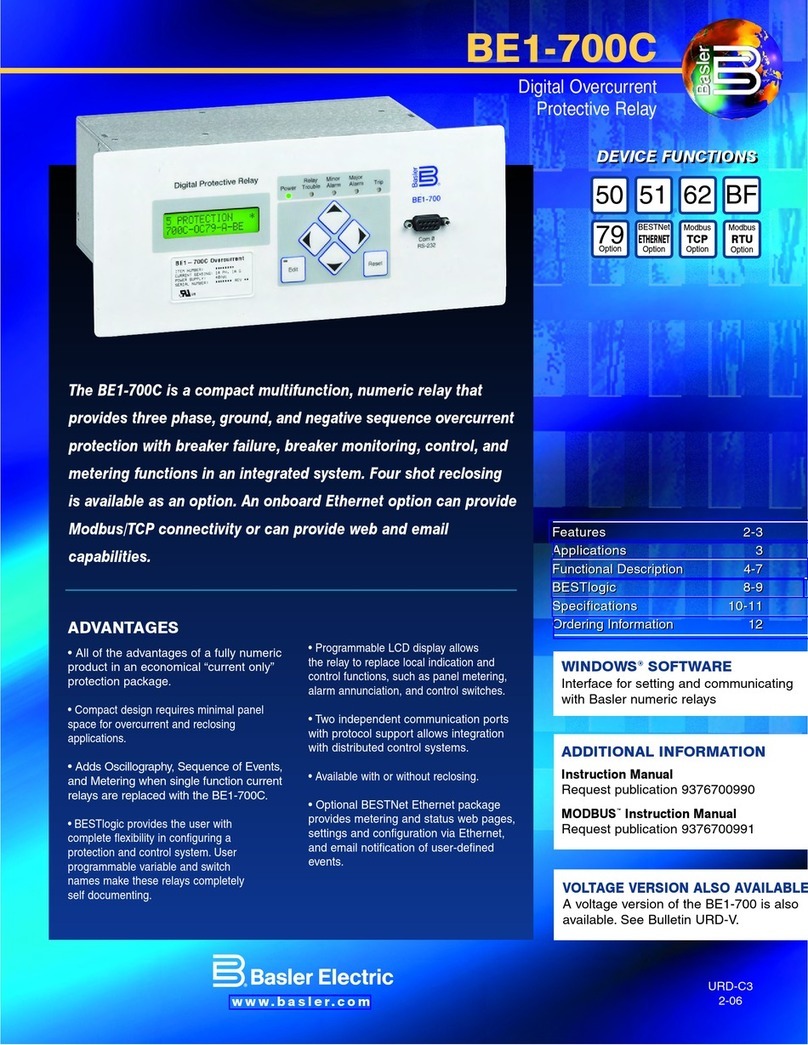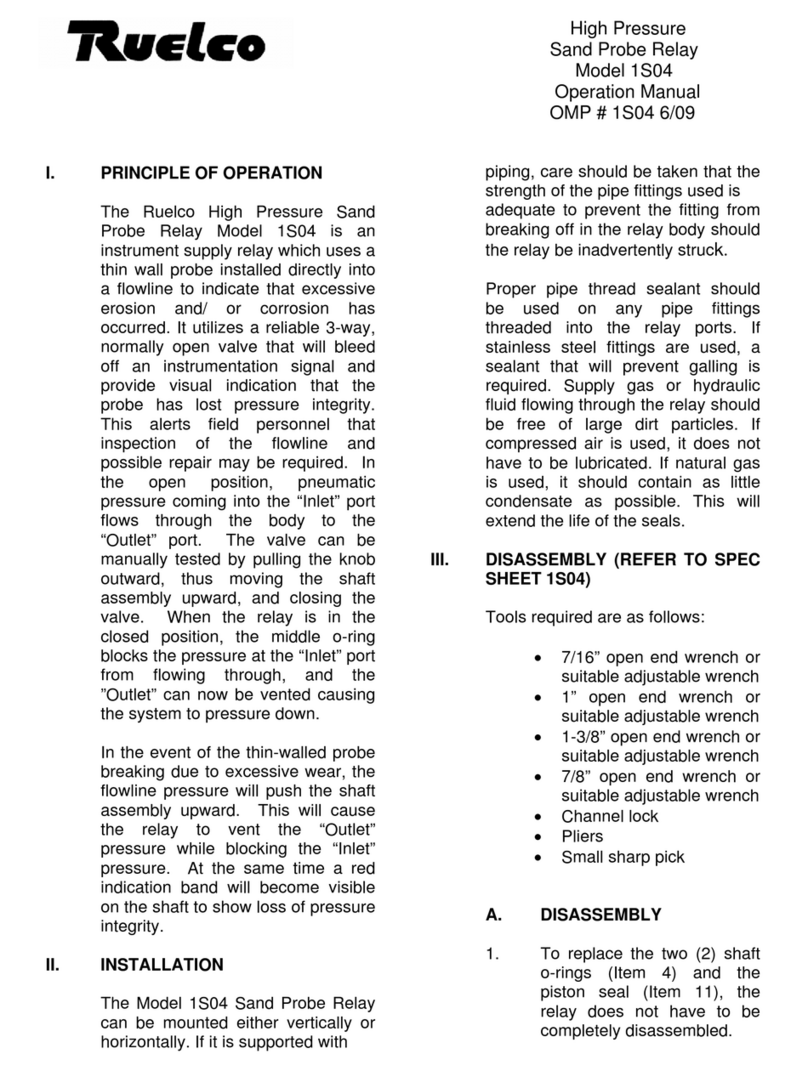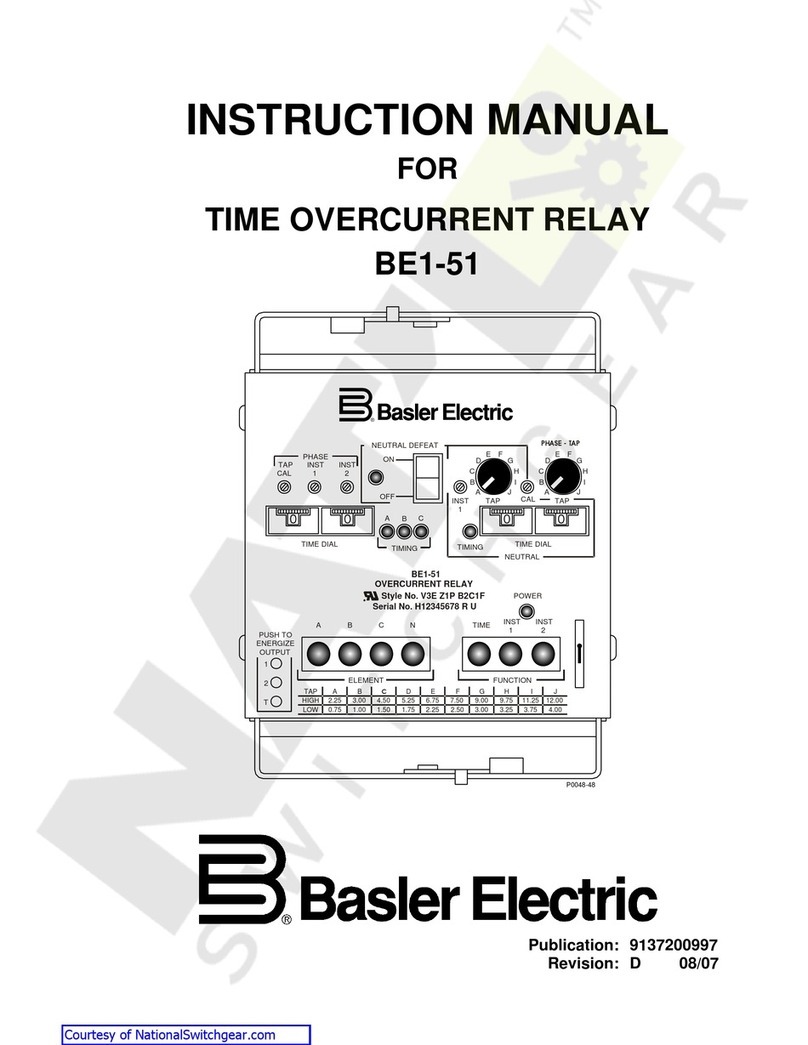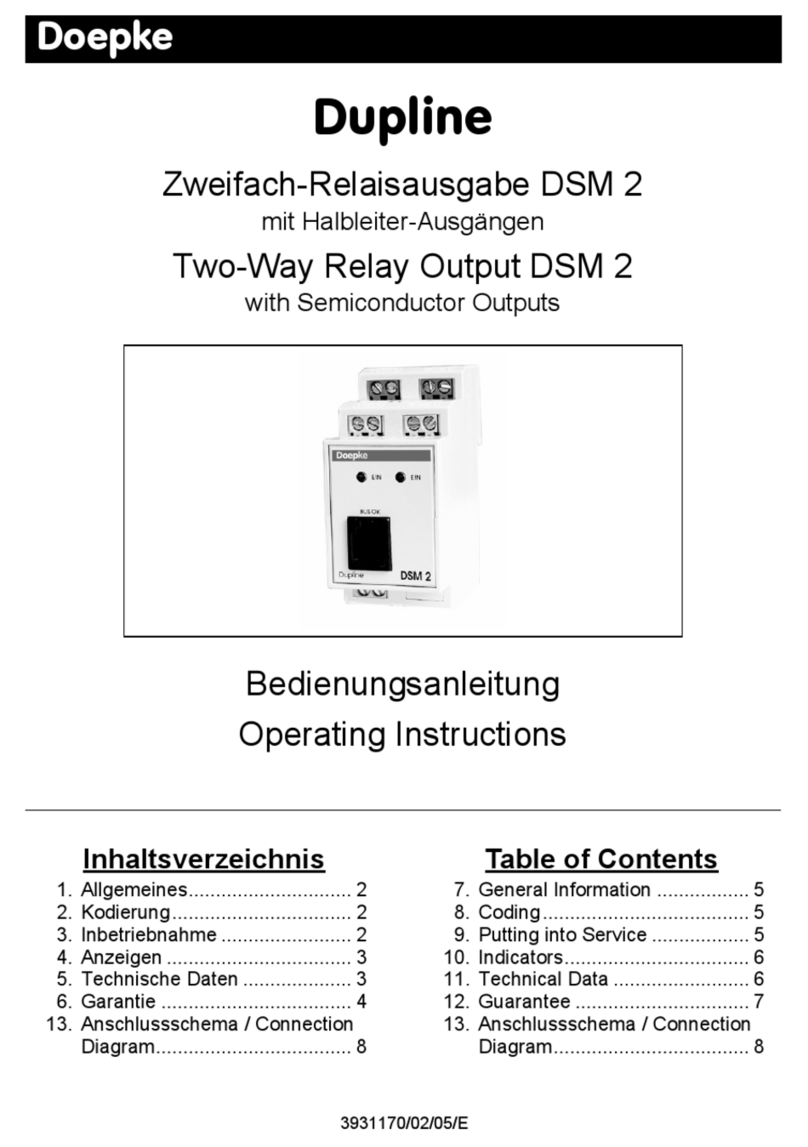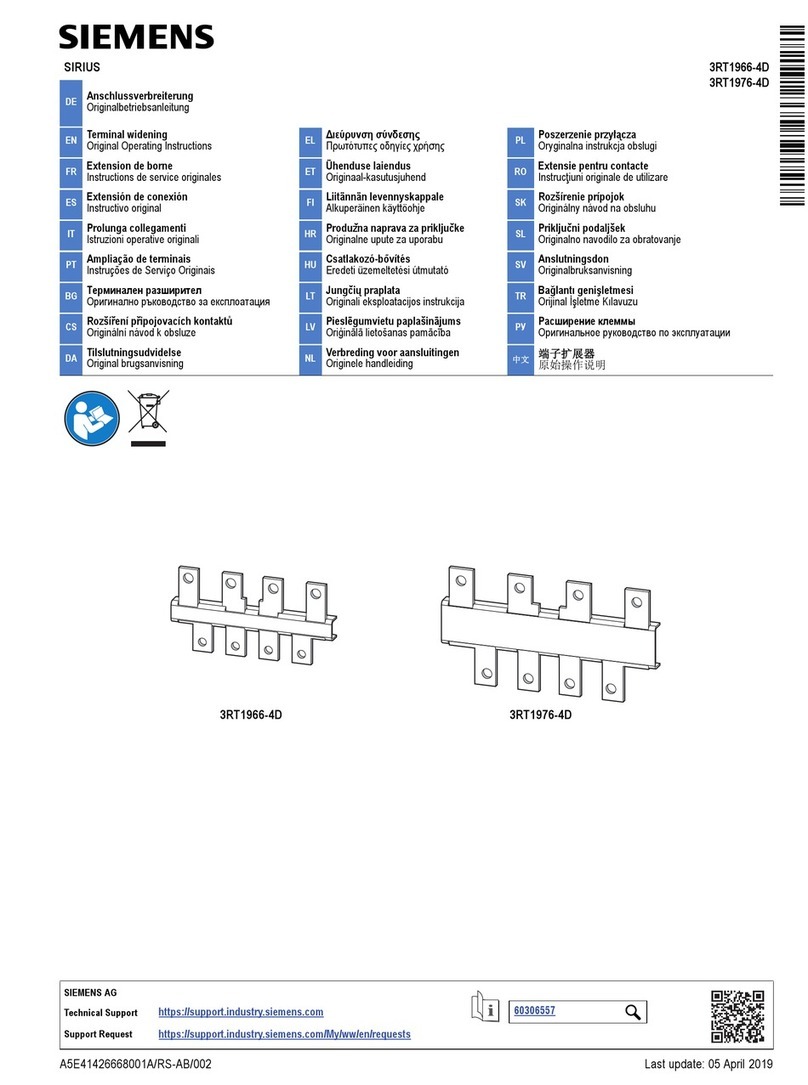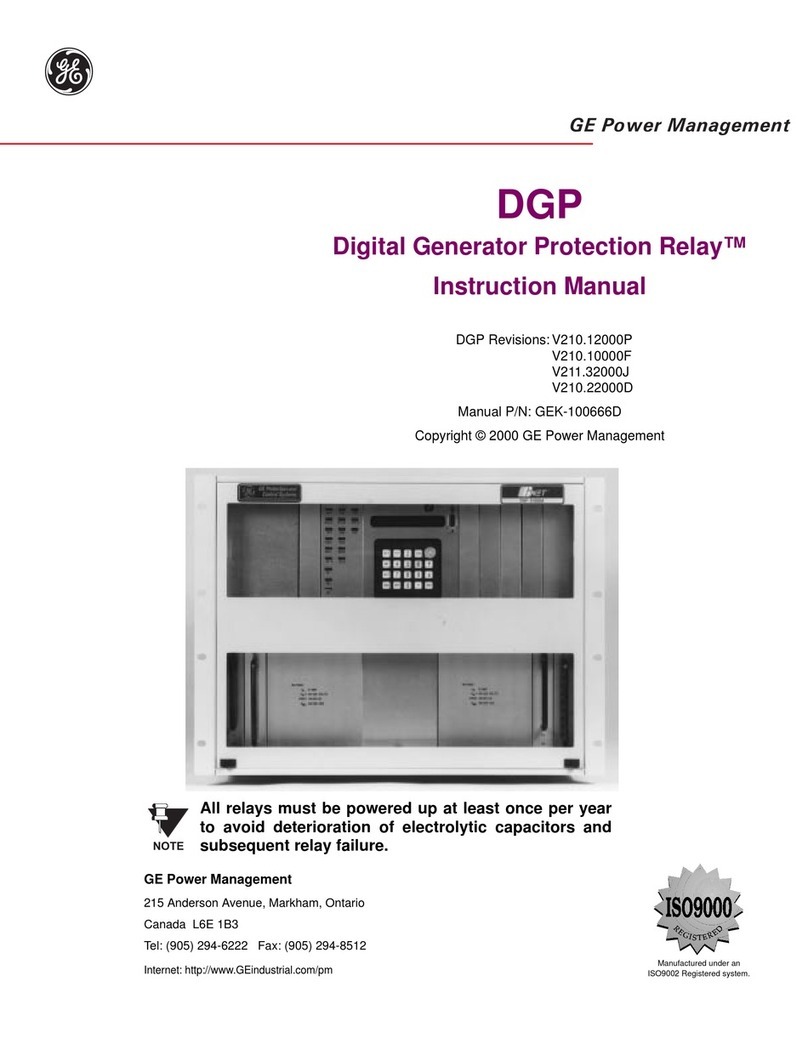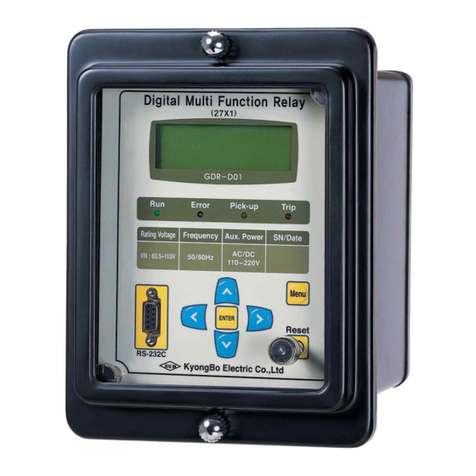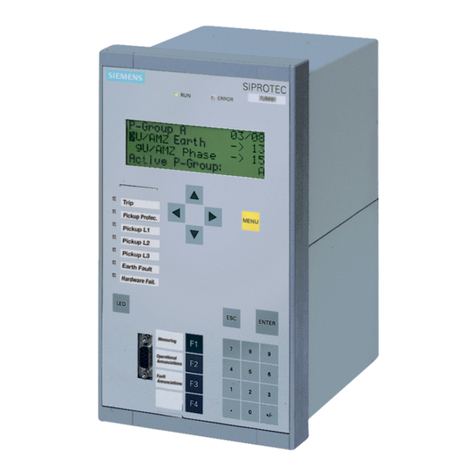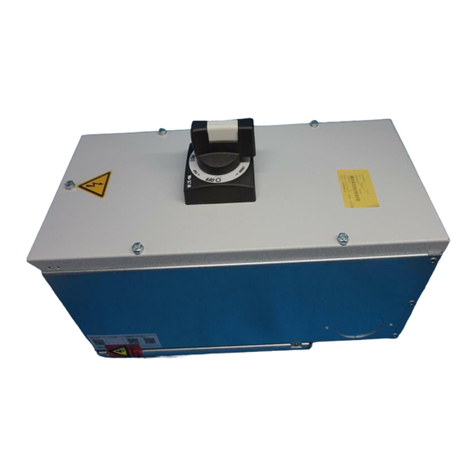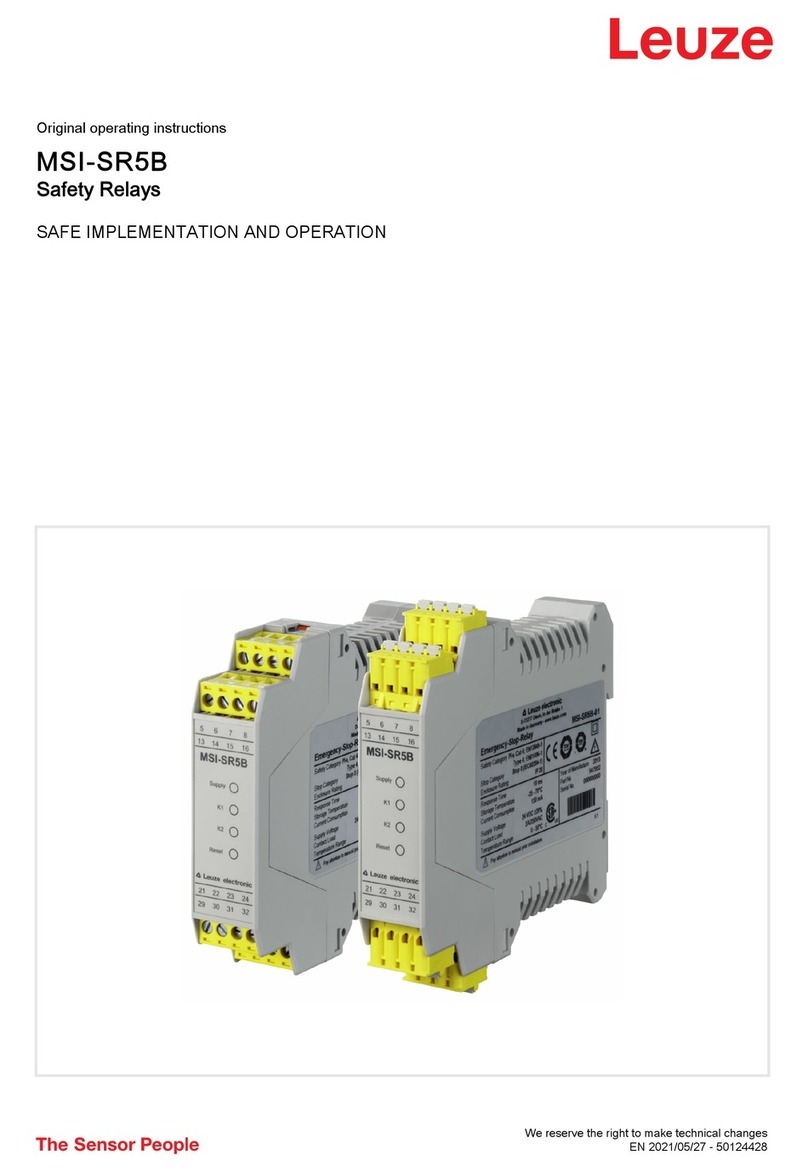
Safety Relay Unit
G9SA
The G9SA Series Offers a Complete Line-up
of Compact Units.
• Four kinds of 45-mm wide Units are available:
A 3-pole model, a 5-pole model, and models with 3 poles and 2
OFF-delay poles, as well as a Two-hand Controller.
Also available are 17.5-mm wide Expansion Units with 3 poles
and 3 OFF-delay poles.
• Simple expansion connection.
• OFF-delay models have 15-step OFF-delay settings.
• Conforms to EN standards. (BG approval)
• Certified by UL and CSA.
• Both DIN track mounting and screw mounting are possible.
Note: Be sure to read the “Safety Precautions” on page 13.
Ordering Information
Emergency-stop Units
Emergency-stop OFF-delay Units
Note: The following 15-step OFF-delay time settings are available:
T075: 0.5, 1, 1.5, 2, 2.5, 3, 3.5, 4, 4.5, 5, 5.5, 6, 6.5, 7, and 7.5 s
T15: 1, 2, 3, 4, 5, 6, 7, 8, 9, 10, 11, 12, 13, 14, and 15 s
T30: 2, 4, 6, 8, 10, 12, 14, 16, 18, 20, 22, 24, 26, 28, and 30 s
Two-hand Controller
Expansion Unit
The Expansion Unit connects to a G9SA-301, G9SA-501, G9SA-321, or G9SA-TH301.
Main contacts Auxiliary contact Number of input channels Rated voltage Model Category
3PST-NO SPST-NC 1 channel or 2 channels possible 24 VAC/VDC G9SA-301 4
100 to 240 VAC
5PST-NO 24 VAC/VDC G9SA-501
100 to 240 VAC
Main contacts OFF-delay
contacts
Auxiliary
contact
Number of
input channels
OFF-delay
time
Rated voltage Model Category
3PST-NO DPST-NO SPST-NC 1 channel or
2 channels
possible
7.5 s 24 VAC/VDC G9SA-321-T075 Main contacts:
4
OFF-delay
contacts:
3
100 to 240 VAC
15 s 24 VAC/VDC G9SA-321-T15
100 to 240 VAC
30 s 24 VAC/VDC G9SA-321-T30
100 to 240 VAC
Main contacts Auxiliary contact Number of input channels Rated voltage Model Category
3PST-NO SPST-NC 2 channels 24 VAC/VDC G9SA-TH301 4
100 to 240 VAC
Main contacts Auxiliary contact Model Category
3PST-NO SPST-NC G9SA-EX301 4
http://www.ia.omron.com/ 1
(c)Copyright OMRON Corporation 2007 All Rights Reserved.
Artisan Technology Group - Quality Instrumentation ... Guaranteed | (888) 88-SOURCE | www.artisantg.com
